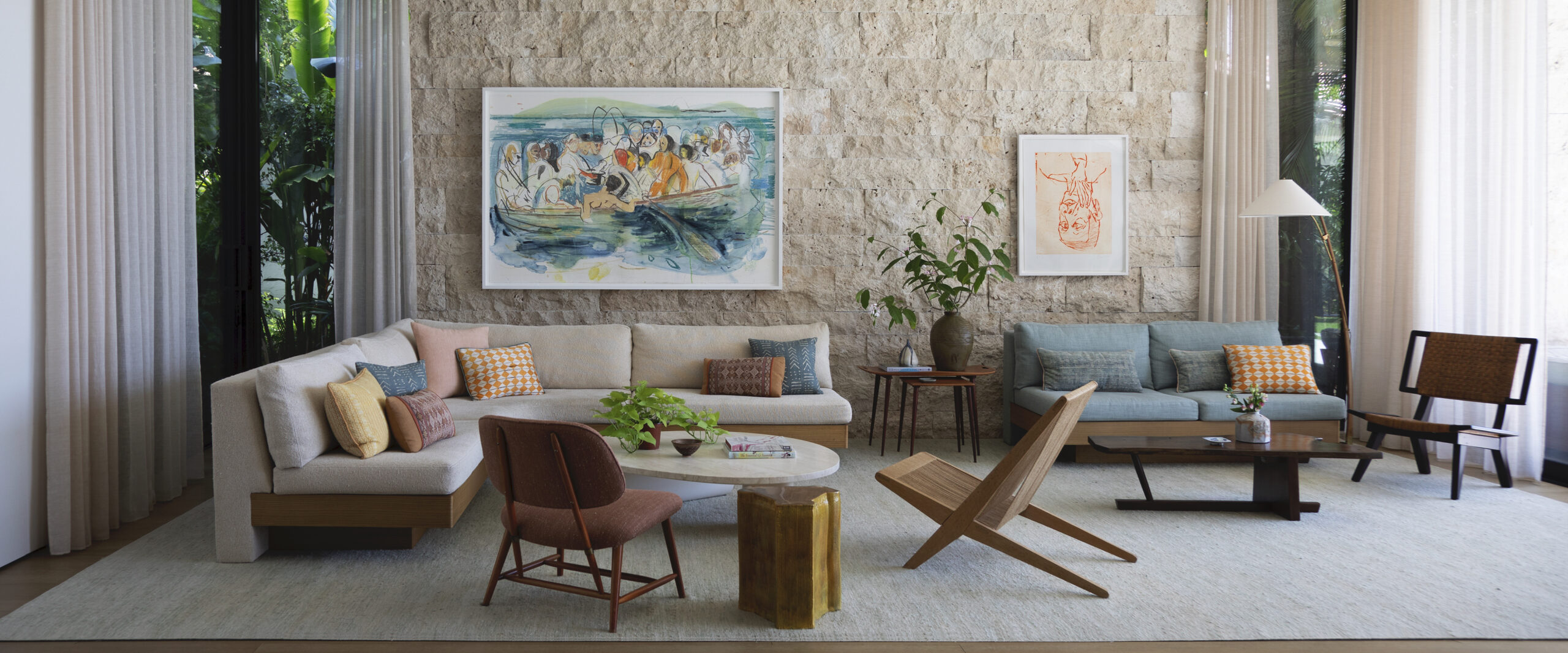The Miami and New York-based interior designer brings together collectible furniture, artworks and objects with the aim of forming collections, not just interior environments.
Sandra Weingort cites the minimalistic mastery of Louis Kahn as a seminal influence on her design aesthetic. “Without a doubt, Louis Kahn’s spaces have had the biggest impact on me, especially his Salk Institute and Phillips Exeter Academy Library,” says the acclaimed interior designer. “I strongly believe my simplistic and pared-back style really started to evolve from those two spaces.”
The Colombian native, who divides her time between New York and Miami, has experienced heightened industry adulation in the past few years, as her work has begun to resonate strongly with a client base of impassioned art and furniture collectors. The designer, who had a successful career at Studio Sofield before establishing her namesake studio, experienced a touch of Instagram-induced frenzy in 2020, when design aesthetes discovered the blue-hued, Japanese Modernism-inspired living room she designed for a client’s temporary residence in the Lower East side.
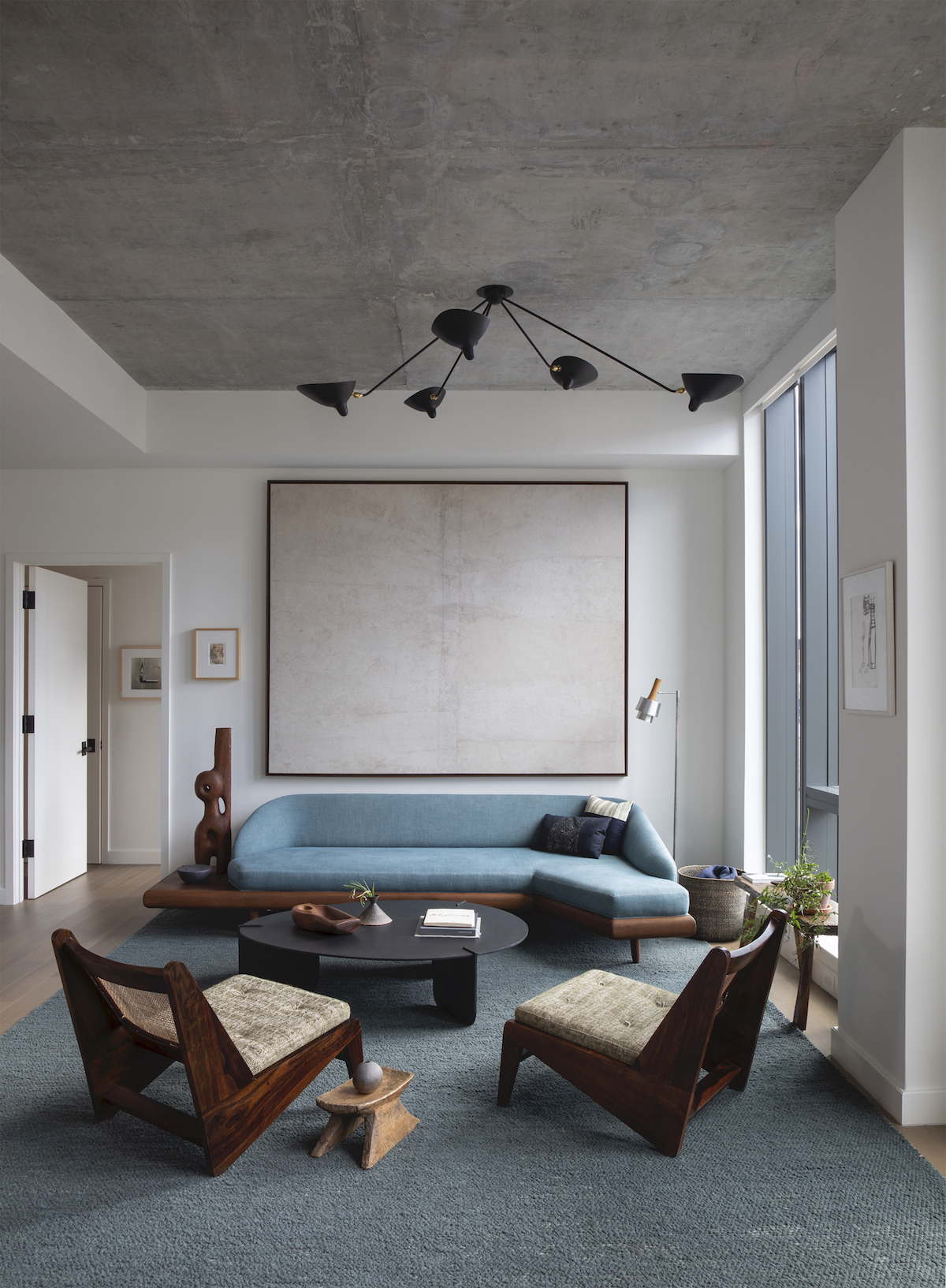

Working with a client described as a design lover, contemporary art connoisseur, and collector of important furniture, Weingort specified low, dark furniture to accentuate the feeling of spaciousness within a tactile, tonally-neutral canvas, a textured environment remodelled under her watchful eye. Focusing on their mutual respect for Japanese and mid-century furniture, Weingort curated a mix of Nakashima, Jeanneret, and found objects to sit in unison with her client’s existing contemporary art collection. The result has an air of calm and serenity that defines much of Weingort’s work.
I cannot visualize an interior space without knowing what furniture, art and objects may or may not habit the space – I need a holistic approach.
Sandra Weingort
“It may all look calm and collected, but there is a whirlwind of thoughts and constant movement of ideas in my head,” the designer explains. It’s worth noting, however, that Weingort is not of the opinion that all her pieces need to blend together or merge into a space. Oftentimes, she intentionally clashes seemingly disparate pieces, creating unexpected juxtaposition and tension in her work.
Weingort’s process is equally worth mentioning because without fail, she begins every project (many of them complete gut and renovation jobs) with the furniture. “Clients often think I’m jumping the gun,” she says, “but it just reflects the way that I work. I cannot visualize an interior space without knowing what furniture, art and objects may or may not habit the space – I need a holistic approach.”
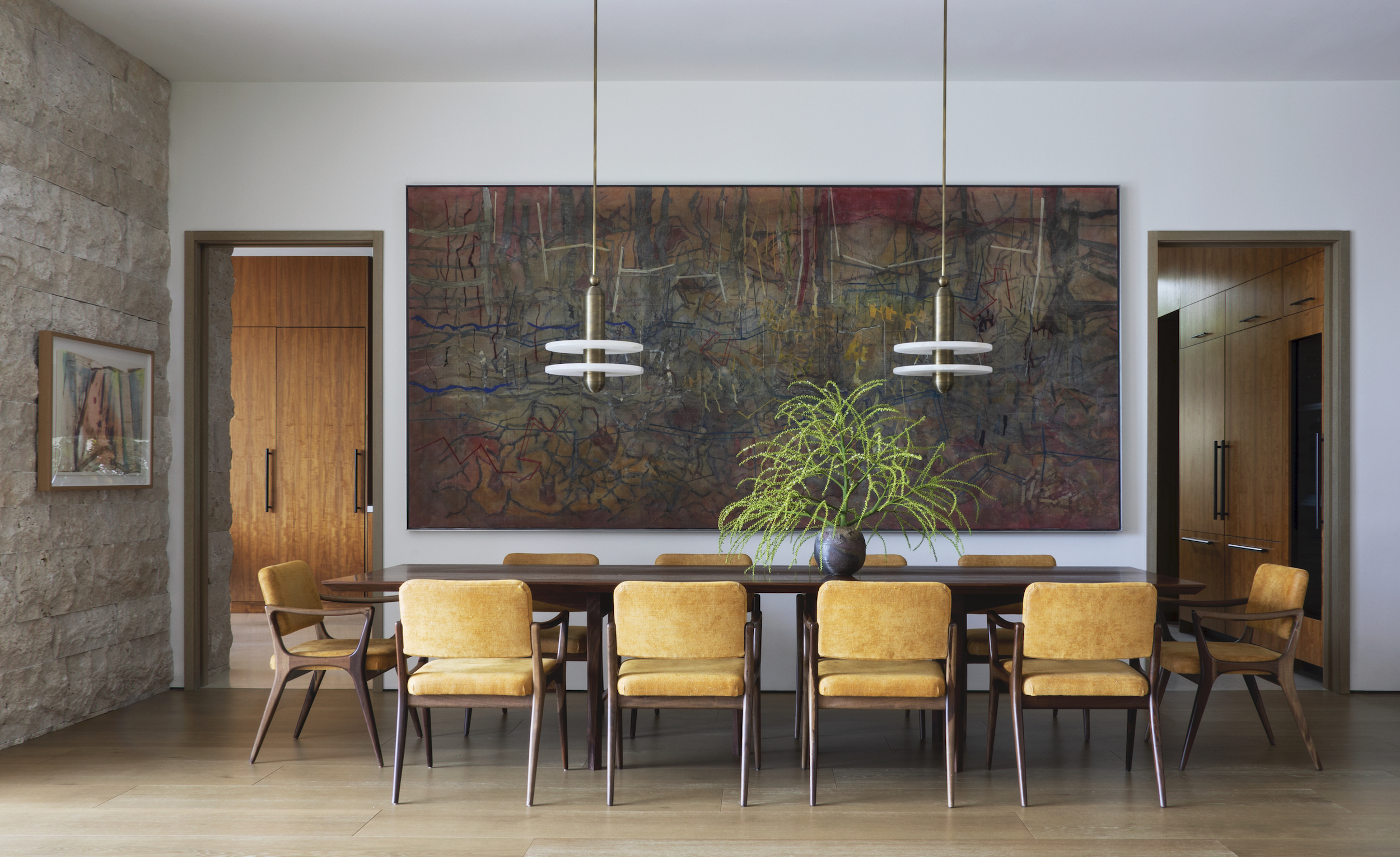
The designer often starts out a project by selecting vintage furniture, with her designs and inspiration for the project directly informed by these pieces. “Even when I am at the early stage of designing the interior architecture and selecting finishes, millwork and all the design details, I always take into account and present to my clients my furniture selections alongside finishes.”
She begins by contacting a suite of her favorite galleries and sourcing pieces from their collections, and then pulling in all the materials. “Of course, the sourcing of furniture continues to happen over time, but the key and most important pieces are selected from the start,” she says. “Call me old fashioned, but I like to get on the phone and call the galleries and talk through what they have in their collection.”
Weingort adds: “Although I love seeing furniture in person and try to do so as much as possible, I am also fascinated with the ability to buy online in places like Effetto, and feel so lucky that thanks to platforms like it, I am able to purchase pieces from overseas that I would never find in New York or Miami.”
The designer has fluid relationship with the furniture she selects. “My clients don’t always stay in the same place, and the pieces need to be able to work anywhere. They hold themselves.” She is also very much attracted to the beauty and value inherent in collectible furniture and objects as well as no-name-brand, nondescript ones. “It’s really not all about the monetary value of either the furniture or the art,” she explains, “but how they can add value in space.”
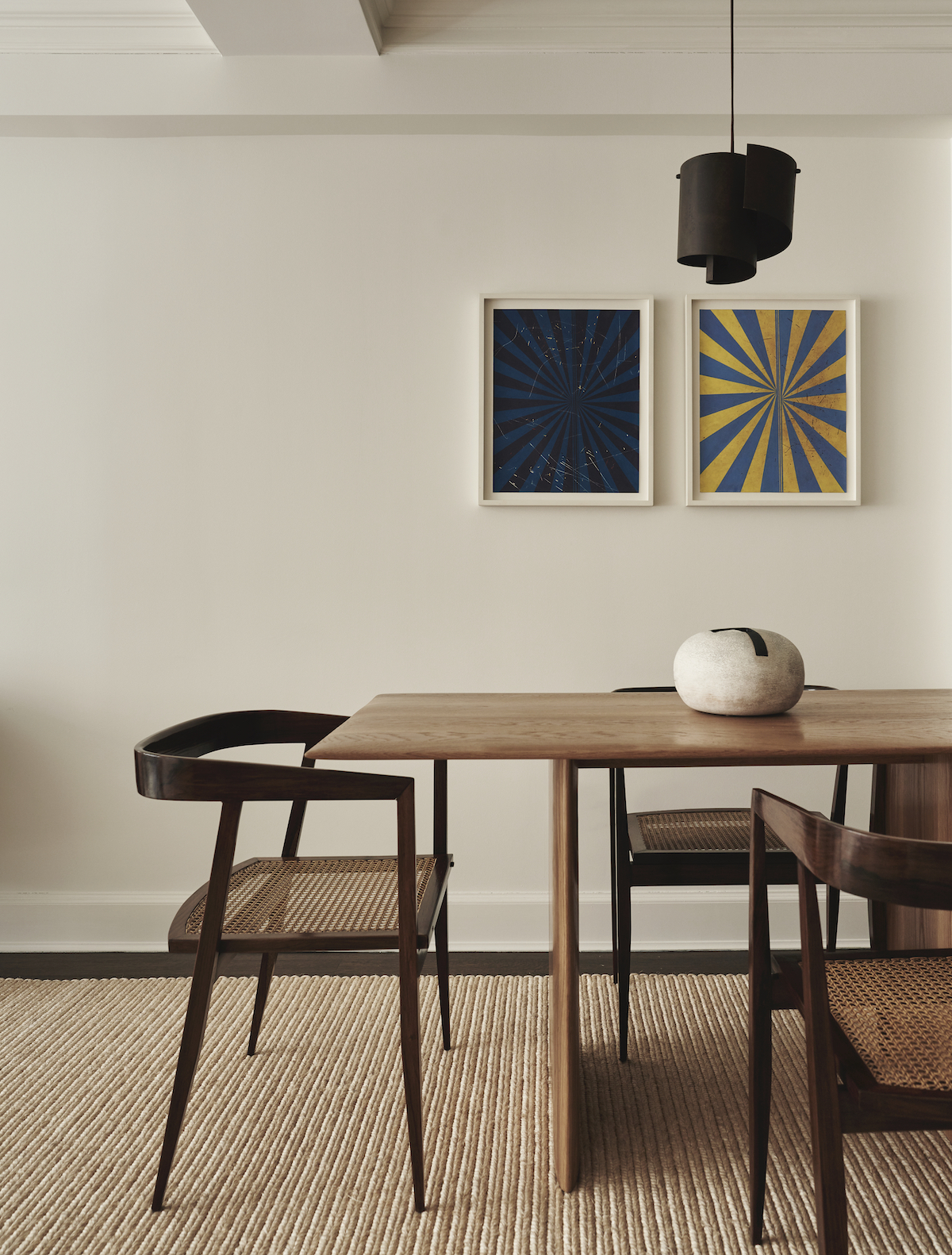
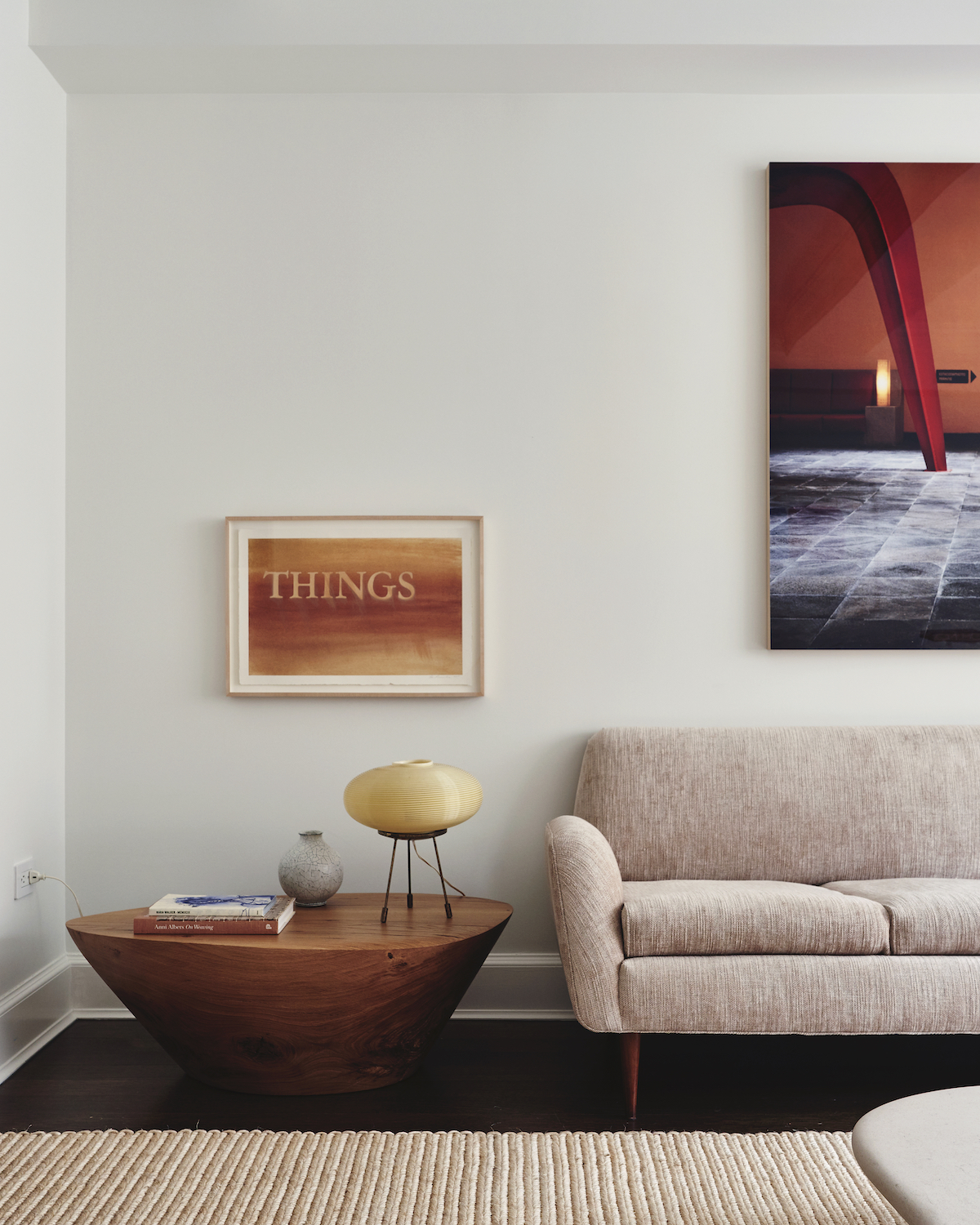
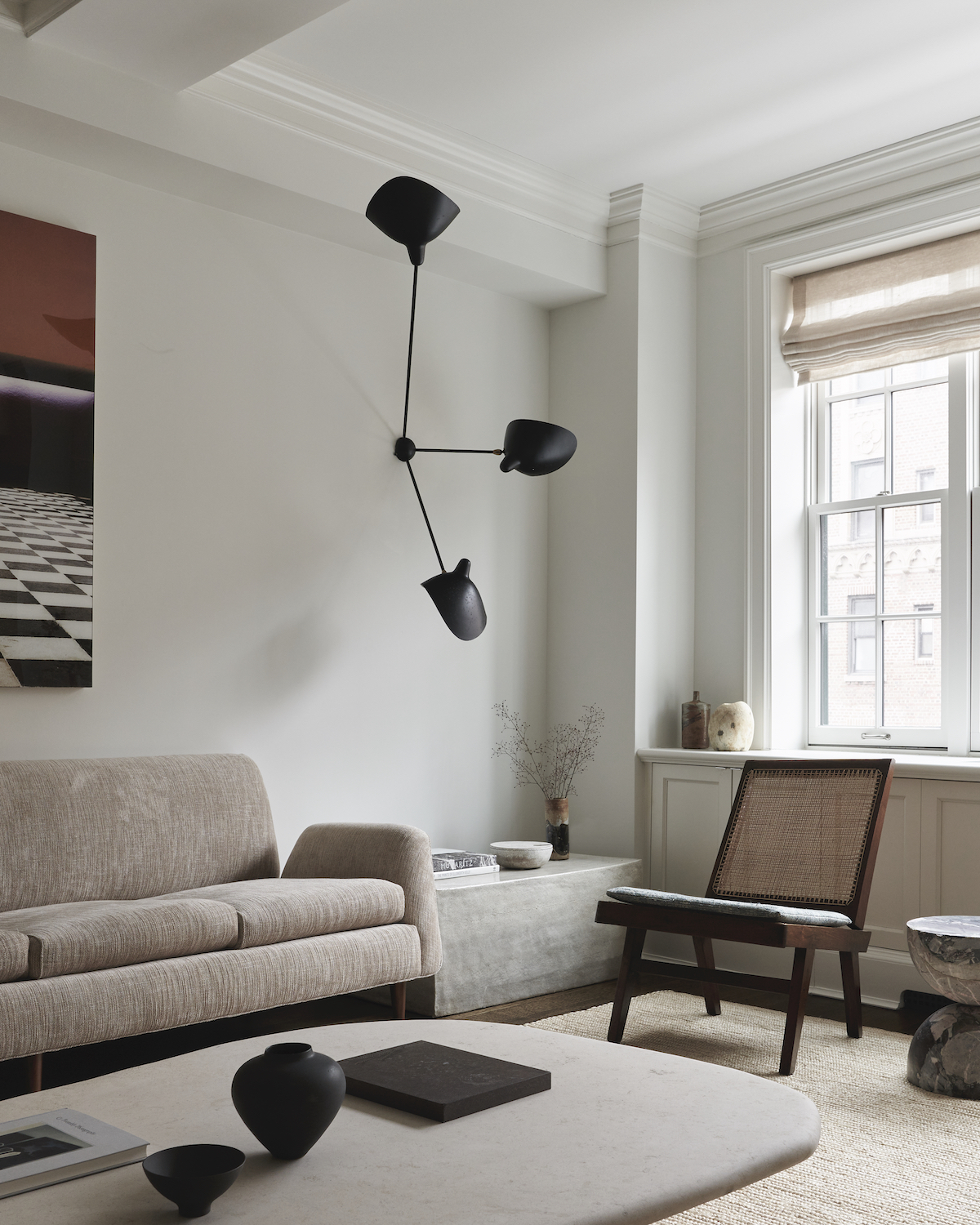
An undeniably strong element present in Weingort’s work is her extensive use of natural materials. “I strongly believe human beings find comfort in nature, and bringing nature into the interiors is where that familiarity and relatability comes from,” she says. “I tend to prefer softer materials, but even hard materials like steel (for example, on the black coffee table used in my Lower East Side project) have a lightness and softness because of its natural and recognizable qualities. When I do use harder materials, I make sure to mix them with soft ones – that is why that table is surrounded by so much upholstery and sits on a very soft and highly textured rug.
It’s not about the monetary value of either the furniture or the art, but how they can add value in a space.
Sandra Weingort
“I also made sure to mix in some wood accessories for that softer effect. I never buy anything that is not handcrafted – it is something that happens subconsciously, I guess, because I am not attracted to anything that feels mass-produced. The materials I select are always natural and genuine, nothing that looks like something it is not. And to that end, I prefer unique pieces, both in the sense that there are only a few made, that are one-offs, that are something I had never seen before. That’s why I love vintage furniture so much.”
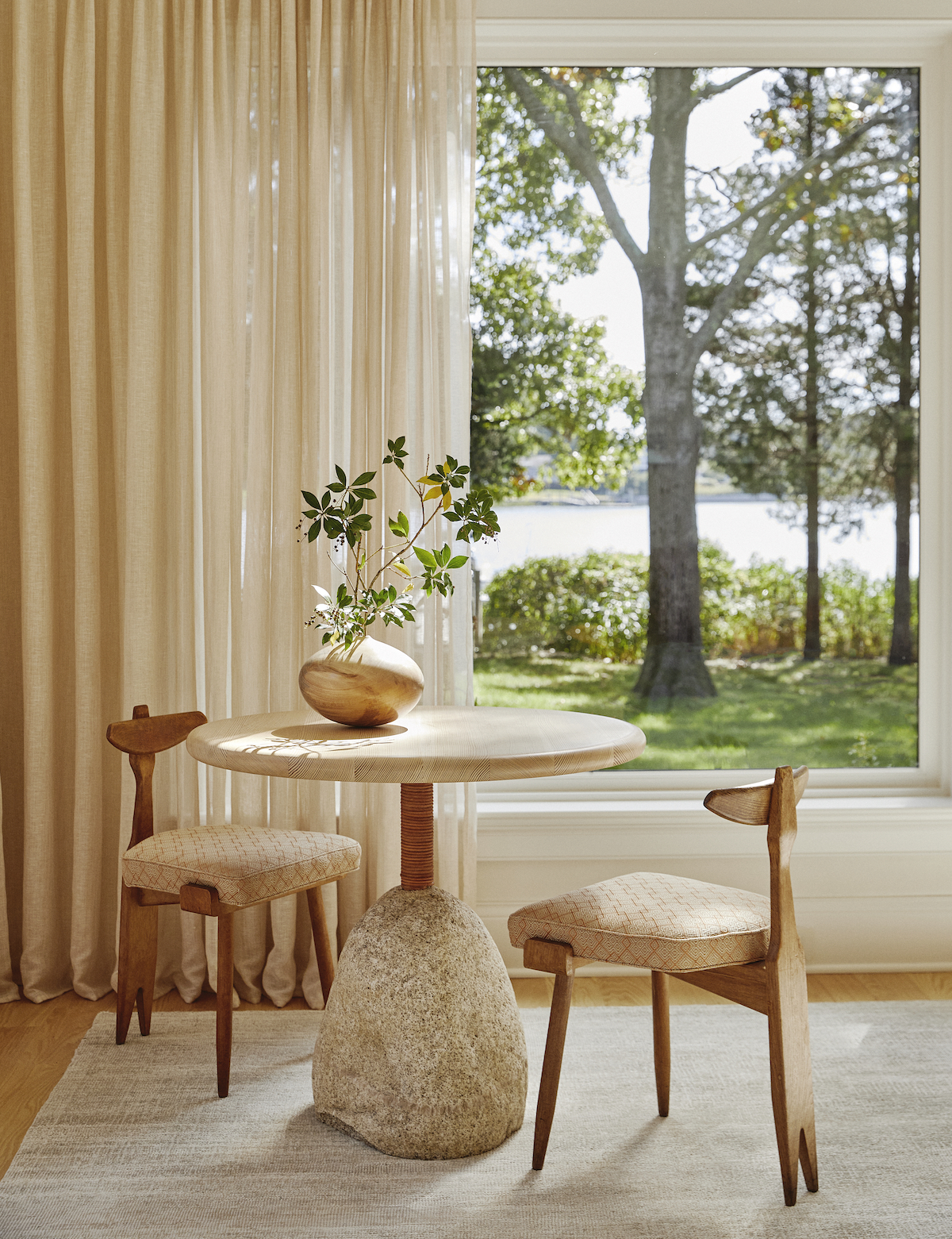
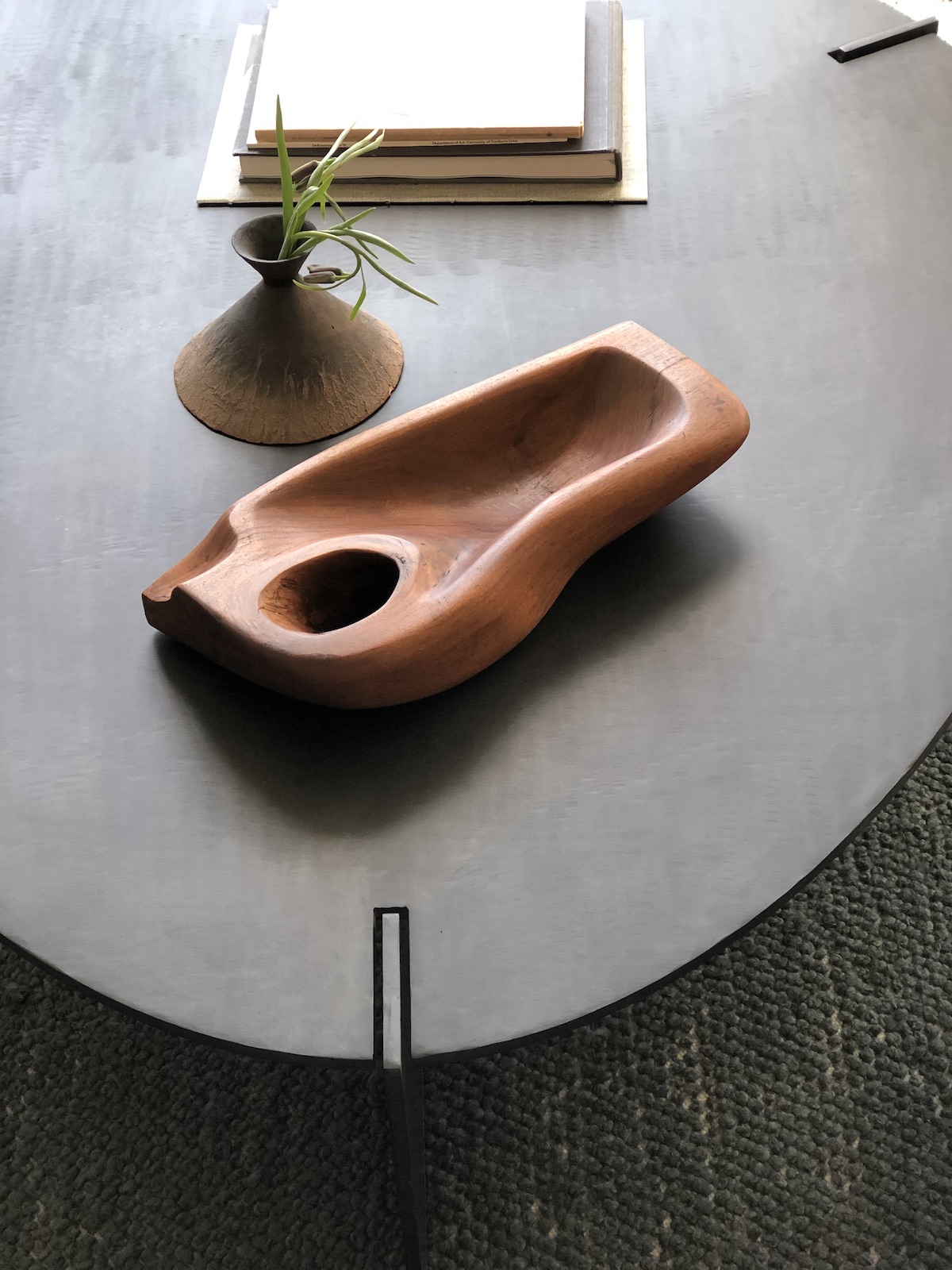
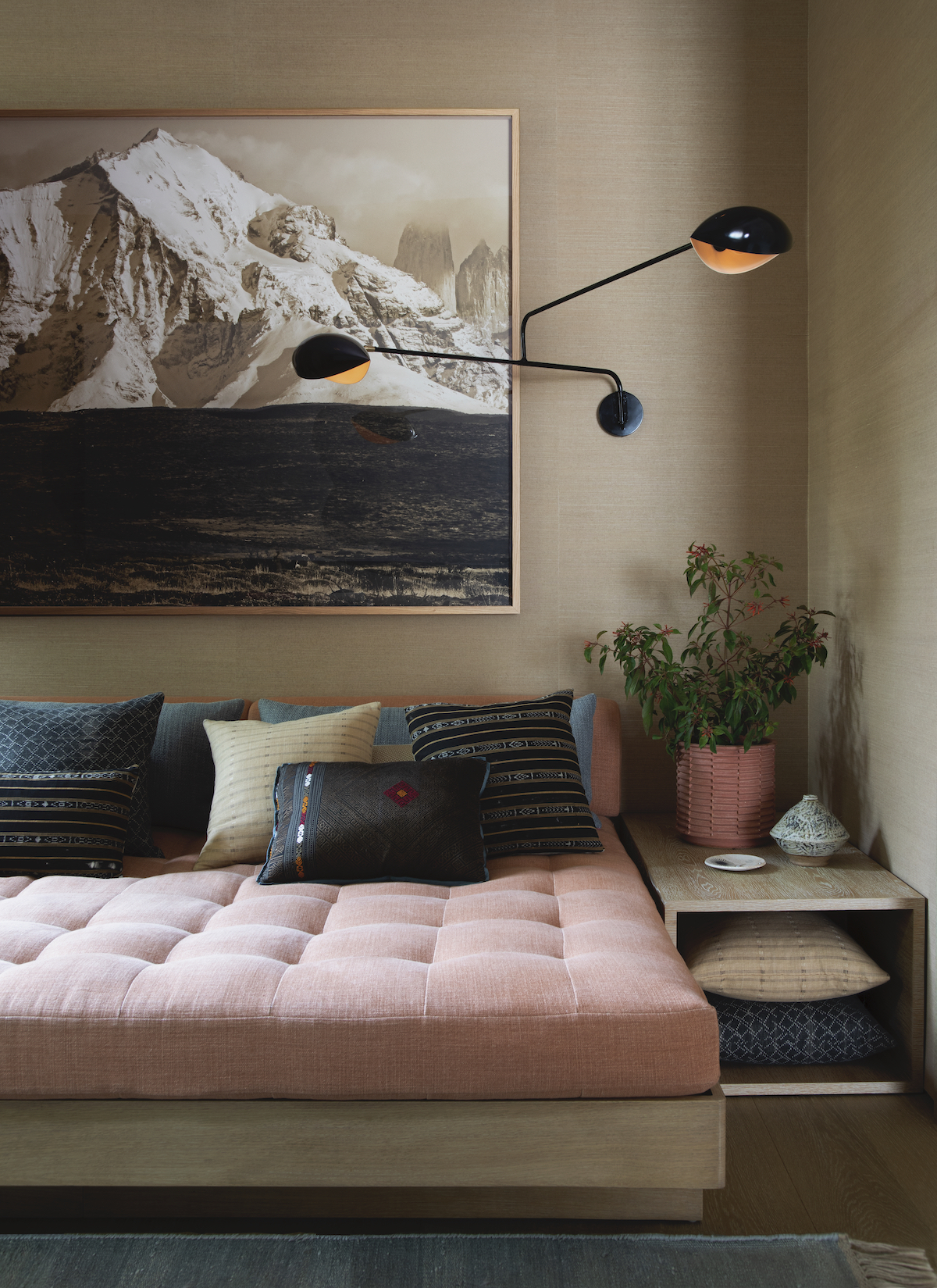
While it’s abundantly evident that Sandra Weingort has found her voice and a clear, refined design direction in her work, she is quick to advise that she is always seeking to evolve. The designer certainly has a design bent towards mid-century, but is not averse to working with pieces from other time periods: “I could be attracted to something 1920s or 1960s, or from past centuries. I recently bought a gorgeous Ethiopian pedestal which we are reworking to function as a table, for example. I love and welcome a new challenge where I can get out of my comfort zone, and this to me is more about incorporating vintage pieces I never considered before, or didn’t know I liked.
“For example, I currently have a project where my client is a big collector of Art Deco pieces. At first, I was a bit shocked about having to incorporate pieces I was not so in love with, but they brought a new life to my work, and my new selections brought a new life to those pieces.” Ultimately, Weingort’s work embodies a level of authenticity that mirrors her in-person manner. As trite as this may sound, it is testament to the designer’s ability to work energetically and collaboratively with her clients, consultants, and contractors to create holistic, warm, and aspirational environments for her clients.
Effect Magazine is brought to you by Effetto



